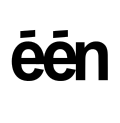This article has multiple issues. Please help improve it or discuss these issues on the talk page . (Learn how and when to remove these messages)
|
 Current Logo Since May 2023 | |
| Country | Belgium |
|---|---|
| Broadcast area | National, also distributed in: Luxembourg Netherlands |
| Headquarters | Brussels |
| Programming | |
| Language | Dutch |
| Picture format | 1080i HDTV (downscaled to 16:9 576i for the SDTV feed) |
| Ownership | |
| Owner | VRT |
| Sister channels | VRT Canvas Ketnet |
| History | |
| Launched | 1953 |
| Former names | NIR TV (1953–1960) BRT (1960–1977) TV1 (1977–2005) Één (2005–2023) |
| Links | |
| Website | www |
| Availability | |
| Terrestrial | |
| Antenne TV | Mux 2 (SD) |
| Digitenne (Netherlands) | Channel 14 (HD) |
| Streaming media | |
| VRT MAX | Watch live (Belgium only) |
| Telenet TV | Watch live (HD) |
| Yelo Play | Watch live (HD) |
| Proximus Pickx | Watch live (HD - Belgium only) |
| Ziggo GO (Netherlands) | ZiggoGO.tv (Europe only) |
VRT 1 is a public Dutch-language TV station in Belgium, owned by the VRT, which also owns Ketnet, VRT Canvas and several radio stations. Although the channel is commercial-free, short sponsorship messages are broadcast in between some programmes.
Contents
- On-screen presentation
- Continuity
- Seasonal identity
- Logo history
- Programming
- Belgian
- International
- Teletext
- References
- External links
VRT 1 focuses on drama, entertainment, news and current affairs in a similar vein to BBC One in the United Kingdom. The station was formerly known as TV1 until 21 January 2005, when the Eén (English: "one") branding was launched as part of a major station revamp, with a look created by BBC Broadcast. [1] The channel got its current branding in 2023.
VRT 1 is the equivalent of its French-language counterpart, La Une, the first channel of the Belgian Francophone broadcaster, RTBF.











